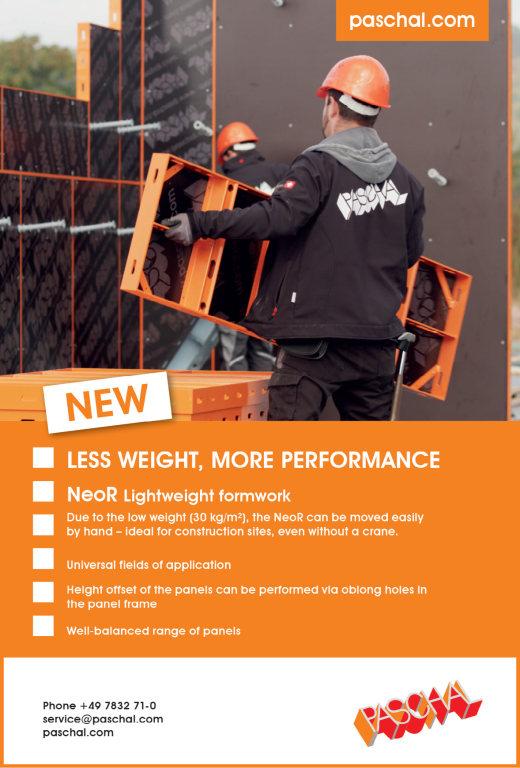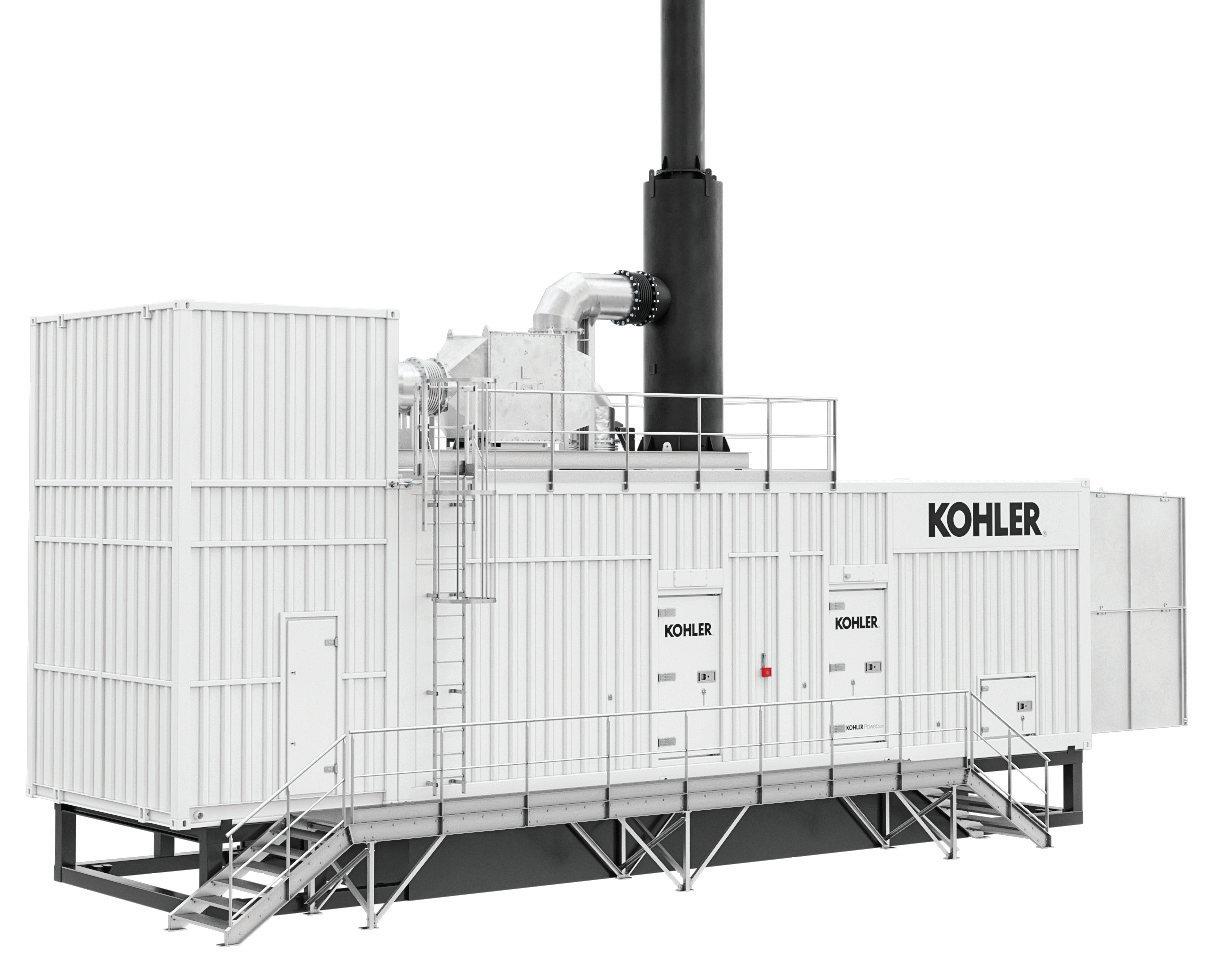
14 minute read
Delivering Reliability and Excellence
Generating excellence, delivering quality
Lenaik Andrieux, GM, Kohler EMEA, speaks to Fyna Ashwath regarding the company's focus in the region, its range of generators including the walk-in PODS, and how they contribute towards sustainability.
Kohler generator sets are used in a wide range of applications including industry, healthcare, construction and the rapidly expanding data centre market. Could you give us some insights on Kohler's focus for the region?
Kohler continues its work in the region, promoting the principles of quality and product development, offering highlyreliable, customised generators for customers. We are able to deliver excellence for every project and adapt to a specific application and regional restraints.
Kohler provides ongoing logistical support to its extensive distribution network with presence in every country in the region, to ensure optimum performance.
Please tell us about the latest trends in gensets and how Kohler’s product offering issupporting sustainability, as there is an increasing trend towards emission requirements and other regulations?
Data centre gensets are in great demand, as people are increasingly conscious of speed and cost. Megatrends like public cloud and 5G adoption will continue to drive the uptake of data services. Modular designs are gaining popularity. Modularisation and offsite manufacturing facilitate customisation. They streamline new build processes, reduce carbon footprints, and lowers costs. Rapid market growth and changes including edge, colocation and hyperscale are increasing.
Kohler has a track record of developing diesel generators that meet the latest environmental regulations. Firstly, Kohler believes in going beyond emissions on paper. And secondly, our efforts with new technologies involving hydrogen or alternative technologies is all about deploying the right technology mix. Our generators are all customised to requirements, including those pertaining to emission and temperature requirements as well as other parameters. Kohler’s commitment to the industry is demonstrated by keeping abreast of incoming regulations, including Stage V requirements and ongoing investment into research and development. For instance, Kohler has introduced a wide range of rental generators to meet the Stage V requirements, including the 20 to 550 kVA power ratings with the Kohler engines for the lower power demand generator sets from 20 to 50 kVA.
Kohler Power Optimised Design Solutions.
Kohler has launched its range of walkin Power Optimised Design Solutions (PODS). Please explain the benefits of this latest development.
The range of walkin PODS was launched in response to the increased market demand for highpower gensets. They offer the highest standards of performance, reliability, robustness, safety, modularity, and competitiveness.
Their size allows for enough internal cooling power to accommodate Kohler’s KD Series generators, giving customers the power to utilise the most powerful generators on the market without compromising on installation and maintenance. The walkin PODS have generous spacing, offering optimal access to different elements of the diesel genset.
Adherence to noise standards as well as optimisation for harsh weather conditions were critical design considerations. Kohler will supply the walkin PODS from its Brest facility in France, which recently committed to more than US$6mn of investment to enhance manufacturing capacity and optimise the logistics and transport for these larger enclosures.
Our walkin PODS are inspired by our customers and we offer a wide range of options and specific adaptations to meet customer needs.
How has Kohler been successful in adapting to challenges created by the pandemic and what changes has it brought in?
Despite global supply chain difficulties due to the pandemic, we have been able to collaborate with customers and suppliers and have been successful in providing ongoing support and service. Kohler has been offering power solutions, since 1920 and we live by serving the genset industry well. Our equipment is the last insurance. For instance, in a hospital, we are providing energy insurance.
During the pandemic, globally, we have all learned to collaborate. For instance, today, for the final testing and inspection of generators, remote testing with digital tools help customers monitor tests in realtime. The pandemic has reinforced operations at Kohler and we continue our huge focus on the supply chain and distributors.■
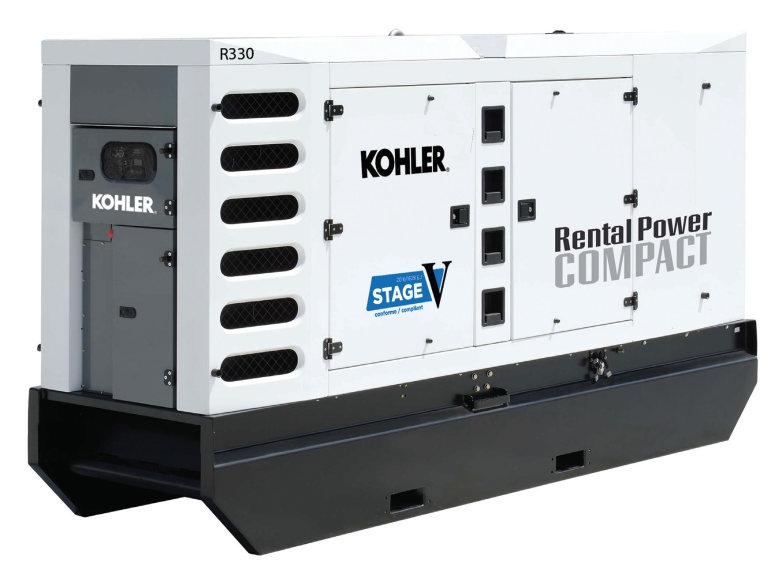
Kohler has introduced a wide range of rental generators to meet the Stage V requirements.
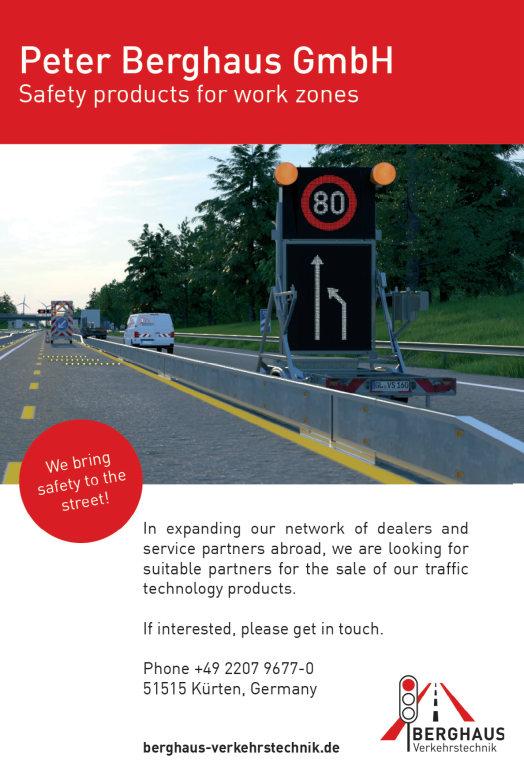
The power of the cold chain
AD Ports Group provides insights on factors including active engagement with supply chain partners and the role of digitisation in enhancing the temperature controlled supply chain.
TODAY, LIFE SCIENCES products traverse the globe at speeds, and by modes and related supply chains not conceived even a generation ago. Perhaps the most innovative among them all, given its increasing logistical challenges, is the cold chain.
Of course, the cold chain – the temperaturecontrolled supply chain –must continue to innovate to survive and remain relevant in today’s world. Today’s COVID19 vaccine demand, with its cold and ultracold shipment and storage requirements, continues to demonstrate just how much the life sciences world continues to rely upon a global cold chain for the swift and secure movement of its goods.
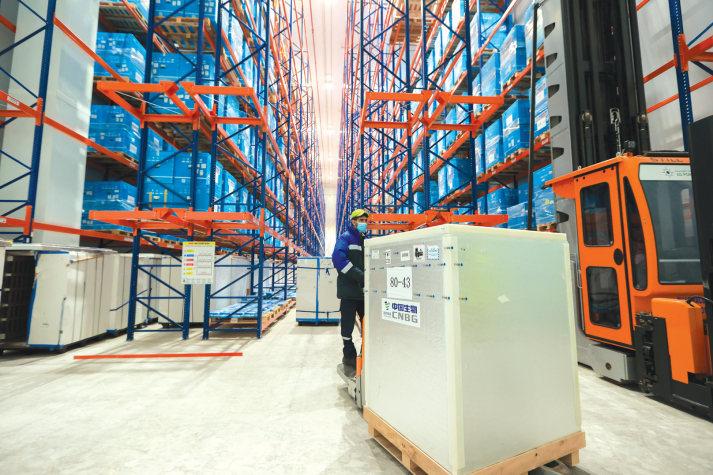
Engaging with partners
During June 2021, AD Ports Group conducted interviews with global cold chain experts who support the life sciences sector. They revealed that life science organisations can benefit the most from today’s cold chain by actively changing the way they engage with their supply chain partners. They should be deploying the latest cold chain technologies, relying on the best related logistics processes and working with the world’s best infrastructure partners.
Vaccines serve as an ideal illustration of today’s demand on the global cold chain as they usually have a short shelf life. Manufacturers produce doses, and they are shipped immediately in batches of 100,000 to 150,000 doses – vials or syringes – a day. They are shipped in temperature conditions ranging from 2 to 8°C, frozen (20°C), deep frozen (80°C) and cryofrozen (150°C). The safety and temperature regimen must be extremely strict.
The first step to understanding the science behind any healthcare industry cold chain is to understand the related products’ shelf lives and be able to cater to those increasingly rigorous temperature demands. Only then can one begin to apply the best technologies to govern their storage and transportation. One of the experts interviewed, said, “We have a situation where we have multiple vaccines, but each vaccine has its own temperature requirements. Active ingredients differ from one vaccine to another, and the shipping times and distances also vary.”
The temperature‐controlled supply chain must continue to innovate to remain relevant.
Role of IoT
Cold chain experts believe that, from a risk mitigation perspective, tracking and tracing and internet of things (IoT) will play an important technological contribution to managing the cold chain. It is vital that product security is ensured throughout the supply chain. In addition, digitisation – the need to reduce the human factor, the human handover – will be an important advancement in the future.
One such innovation is AD Ports Group’s proprietary custombuilt digital system “mUnity” which ensures full vaccine visibility and tamperproof distribution as part of its drive to deliver millions of COVID19 vaccines around the world via the Abu Dhabi Governmentled HOPE Consortium initiative. Developed by its digital subsidiary, Maqta Gateway, mUnity uses blockchain technology to track and trace COVID19 vaccine sourcing, storage, shipment, and all related data in realtime.
Life science organisations that want to ensure the integrity of their shipments must seek to own the “last mile” and do so by working with the best possible logistics partners they can.
As one expert said, “When we move life science containers, we believe we are moving patients’ lives, not simply products. That is how seriously we take our work, and that is how important each element of the cold chain must be considered from endtoend, if we are to continue to innovate.” ■
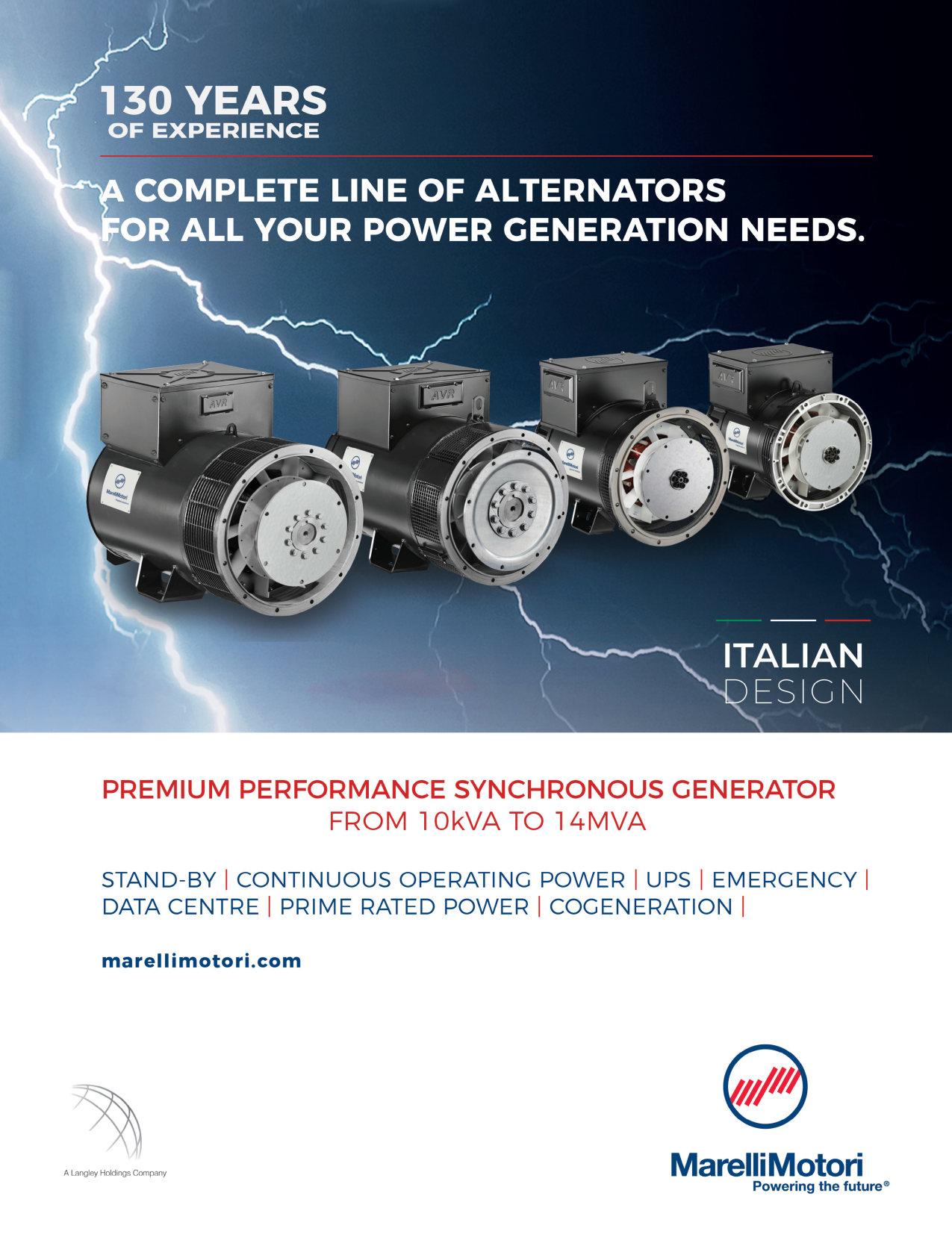
Panduit Fibre Optic Systems.
Getting the most out of network infrastructure
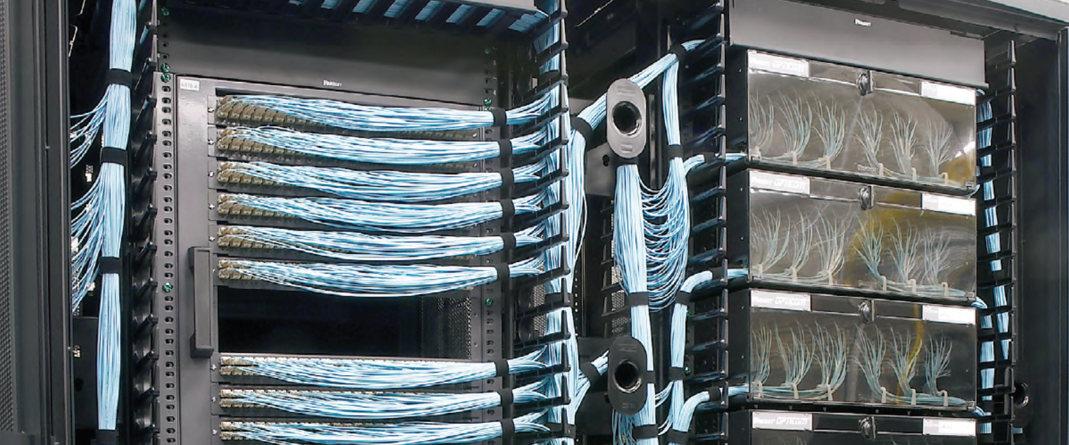
Bassel Alhalabi, founder and MD, Trident Technology Services, Frank Straka, director of business development for enterprise, Panduit and Jeff Paliga, director, Global Data Centre Business Development, Panduit, offer insights on future-proofing network infrastructure.
Photo Credit : Trident Technology Services
THE MOST CRITICAL trend driving the evolution in LAN and DC physical infrastructure is the ‘need for speed’ resulting from the infrastructure modernisation since edge and distributed computing introduced an additional layer, warranting a highperformance network with reduced latency and increased bandwidth.
The future physical infrastructure is expected to maintain high availability, deliver robust performance, and ensure resiliency. There is a dire need for efficient high bandwidth, low power, small form factor, and costeffective cabling and connectors that provide scalability, conformity, and assurance.
The need for bandwidth keeps increasing – with new technologies like WiFi 6 and 4K video driving bandwidth demands faster than were forecast. It is critical to deploy an infrastructure that supports increasing data needs.
What to look for
Users should look for convergence towards Ethernet within different commercial office technologies. For example, security cameras used to run over CCTV. Now, the vast majority of new cameras are all IPbased. Panduit anticipates this with other building technologies like HVAC, lighting, security, and other building sensors. New technologies like Single Pair Ethernet will help drive the adoption of these technologies.
An important top tip to futureproof Network Infrastructure is to install a Category 6A cabling system. This will provide the maximum 10 gigabit per second data rate over copper while providing the best performance with technologies like Power over Ethernet. Category 6A cable is the highestrated copper cabling system designed around supporting a commercial building. As a result, companies can be expected to install this more and more. 5G is impacting structured cabling in data centres and will serve as an important enabler to deliver applications and services at performance levels never seen before. Further, cloud, edge deployments and central offices rearchitected as data centres (CORD) can and will benefit various users from multiple vertical markets.
As a result, there will be more demands on all types of IT infrastructure and now in less traditional locations, including the conventional data centres. The cabling infrastructure will have to perform in a ‘flatter’ sense by connecting more servers to servers and using the highest performing cabling, mostly fibre, but still utilising copper where it makes sense in terms of cost, distance, and bandwidth.
A trusted advisor partner who can help define the configuration and topology of the data centre is important. Topology will determine the best cabling infrastructure to deploy copper, fiber, or the combination of both to get a reliable, robust, highspeed, and costeffective network. ■

Smart solutions for cyber security
NETSCOUT SYSTEMS INC’S Threat Intelligence Report underscores the dramatic impact of cyber attacks on private and public organisations as well as governments worldwide. The report reveals that in the first half of 2021, cyber criminals launched approximately 5.4 million Distributed Denial of Services (DDoS) attacks, increasing 11% over 1H2020 figures.
Some major findings from the NETSCOUT 1H2021 Threat Intelligence Report include: • New adaptive DDoS attack techniques evade traditional defenses. By customising their strategies, cyber criminals evolved their attack efforts to bypass cloudbased and onpremise static
DDoS defenses to target commercial banks and credit card processors. • Connectivity of supply chain increasingly under attack. Bad actors looking to cause the most collateral damage focused their efforts on vital internet components, including DNS servers, virtual private network (VPN) concentrators, services, and internet exchanges, disrupting essential gateways. • Cyber criminals add DDoS to their toolkit to launch triple extortion campaigns. • Botnets contribute to major DDoS activity Tracked botnet clusters and highdensity attacksource zones worldwide showcased how malicious adversaries abused these botnets to participate in more than 2.8 million DDoS attacks.
Smart Edge Monitoring
In July 2021, NETSCOUT launched the Smart Edge Monitoring solution to give IT teams complete visibility and insights to assure the highestquality enduser experience in any network or application regardless of where employees perform their job. By reimagining service assurance for the hybrid enterprise, NETSCOUT is the first to introduce an entirely new, patentpending architecture that combines smart data analytics with synthetic transaction testing to deliver visibility and support for the enduser experience whether working at home, business offices, or remote locations.
Smart Edge Monitoring overcomes one of IT’s biggest challenges in problem identification and resolution in complex, multivendor environments. Through integrated analysis, the solution quickly understands what the enduser experience is and exactly why issues are occurring.
Enterprise organisations all have remote locations representing an edge in their network — manufacturing, banking, and retail have factories, branches, and stores many of which have gaps in visibility when problems occur. Smart Edge Monitoring closes those gaps with flexible, costeffective alternatives to get the proper analysis in the right edge location for improved enduser experience and problem resolution.
The value of combining the synthetic testing and packet analysis in Smart Edge Monitoring is that emerging problems are detected as early as possible, so IT teams can quickly discover the reason why and where they are happening. Examples include: • Unified Communications as a Service (UCaaS)– When users at home, branch and remote offices, or headquarters are experiencing poor performance on platforms such as Webex, Microsoft
Teams, and Zoom, Smart Edge Monitoring identifies problems including joinmeeting delays and poor audio and video quality. • With a significant percentage of companies operating a hybrid workforce model, Smart Edge Monitoring provides early detection of performance slowdowns with analysis throughout the transaction ecosystem, from homeuser network, across the WAN, to data centre, application and database servers, and to cloud and SaaS providers, to quickly identify the problem. • Cloud migrations can have gaps in visibility that lead to performance challenges postlaunch. Smart Edge
Monitoring baselines the user experience before, during, and after cutover to cloudbased applications to help mitigate such issues.
It is imperative that defenders and security professionals remain vigilant to protect the critical infrastructure that connects and enables the modern world. ■

Smart Edge Monitoring overcomes one of IT’s biggest challenges in problem identification and resolution in complex, multi‐vendor environments.
Supporting a collaborative approach
A combination of productivity and safety is important for the construction industry. A look at some solutions enhancing protection and efficiency.
TRENDS AND DEVELOPMENTS in construction are bringing in improved collaboration, enabling decisions and choices that achieve maximum impact with the least cost and effort.
Infrastructure projects are a major part of the region’s economic expansion and there are huge infrastructure needs, as it seeks to build efficient transport and logistics networks as well as reliable supplies of clean energy. A number of innovations are enabling a faster pace of development.
New technologies
Dar Al Arkan, a real estate company in Saudi Arabia, has marked a regional first with the introduction of the first 3D Construction Printing (3DCP) technology that will accelerate the speed of construction while enhancing safety and reducing wastage and errors.
Unlike traditional homebuilding methods, 3DCP cuts the construction time by more than half, is more flexible and requires less manpower since it takes only three workers to build one house. This, in turn, contributes to creating a safer workplace. The technology is important in insulation and reduces the cost of electricity bills. A combination of reduced waste of construction materials, less need for repair or rework and low onsite incidents will enable highly costefficient project management than traditional construction. “The introduction of 3D construction printing will revolutionise our approach to construction and enable us to focus on greater flexibility of design, strengthen productivity and achieve higher cost efficiency,” said Ziad El Chaar, vice chairman, Dar Al Arkan Properties. “The Kingdom of Saudi Arabia represents the largest potential market in the Middle East for our disruptive 3D construction technology and many large end customers in the Kingdom have been eagerly awaiting, that the technology became available via an established local company,” commented Henrik LundNielsen, founder & general manager, COBOD.
RMD Kwikform, a global formwork, falsework and ground shoring solutions provider, launched theProp Tableform system for the Middle East and Indian construction markets, designed to improve cycle times for highrise buildings and other tall commercial projects. It uses a small number of components to help keep installation and striking times to a minimum. The company’s Tetrashor, a lightweight modular propping system can deliver a loading capacity of up to 400 kN. The system has been designed for various applications including, propping and needling and facade retention.
Digital technologies and data are also playing an increasingly important role. BIM essentially brings digital transformation to the construction industry worldwide, making possible more impactful decisions with lower cost and effort.
ALEC, one of the most diversified construction group’s in the UAE, believes the utilisation of green technologies will be a crucial factor towards ensuring sustainable development and progress of the construction industry. Under this category, ALEC has identified the use of renewable energy, environmentally sustainable materials and the sustainable management of waste as top priorities.
In addition to collaborating on innovative new ideas and products, ALEC believes a fundamental increase in communication between stakeholders will greatly improve project processes and delivery. ■
